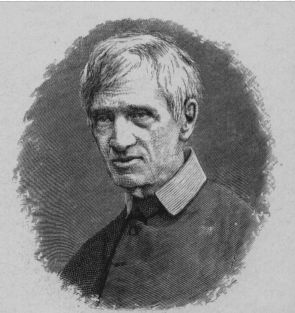|
Głogówko, Greater Poland Voivodeship
Głogówko is a settlement in the administrative district of Gmina Piaski, within Gostyń County, Greater Poland Voivodeship, in west-central Poland. It lies approximately west of Piaski, north-east of Gostyń, and south of the regional capital Poznań. Holy Mountain Shrine The basilica minor was modelled after Baldassare Longhena's Santa Maria della Salute in Venice and constructed by polonized Italians Jerzy Catenazzi, Jan Catenazzi and Pompeo Ferrari between 1675 and 1728. The church and monastery of the Oratory of Saint Philip Neri were established by Adam Konarzewski and completed by his wife Zofia Krystyna Opalińska. It is one of Poland's official Historic Monuments (''Pomnik historii Historic Monument (, ) is one of several categories of objects of cultural heritage in Poland, objects of cultural heritage (in the singular, ''zabytek'') in Poland. To be recognized as a Polish historic monument, an object must be declared suc ...''), as designated March 27, ... [...More Info...] [...Related Items...] OR: [Wikipedia] [Google] [Baidu] |
Basilica On The Holy Mountain, Głogówko
Basilica on the Holy Mountain is a historic Oratorian, Renaissance minor basilica in Głogówko, Poland. The shrine is modelled on the Venetian Santa Maria della Salute. It is located on a raised moraine known as Holy Mountain (''Święta Góra'') near Gostyń, located to its north. In 2008, the basilica was entered onto the List of Historic Monuments of Poland Poland, officially the Republic of Poland, is a country in Central Europe. It extends from the Baltic Sea in the north to the Sudetes and Carpathian Mountains in the south, bordered by Lithuania and Russia to the northeast, Belarus and Ukrai .... References {{coord, 51.5308, N, 17.0208, E, source:wikidata, display=title Gostyń County Głogówko Basilica churches in Poland The Most Holy Virgin Mary, Queen of Poland ... [...More Info...] [...Related Items...] OR: [Wikipedia] [Google] [Baidu] |
Poznań
Poznań ( ) is a city on the Warta, River Warta in west Poland, within the Greater Poland region. The city is an important cultural and business center and one of Poland's most populous regions with many regional customs such as Saint John's Fair, Poznań, Saint John's Fair (''Jarmark Świętojański''), traditional St. Martin's croissant, Saint Martin's croissants and a local dialect. Among its most important heritage sites are the Renaissance in Poland, Renaissance Old Town, Poznań Town Hall, Town Hall and Poznań Cathedral. Poznań is the fifth-largest List of cities and towns in Poland#Cities, city in Poland. As of 2023, the city's population is 540,146, while the Poznań metropolitan area (''Metropolia Poznań'') comprising Poznań County and several other communities is inhabited by over 1.029 million people. It is one of four historical capitals of medieval Poland and the ancient capital of the Greater Poland region, currently the administrative capital of the pr ... [...More Info...] [...Related Items...] OR: [Wikipedia] [Google] [Baidu] |
Pomnik Historii
Historic Monument (, ) is one of several categories of objects of cultural heritage in Poland, objects of cultural heritage (in the singular, ''zabytek'') in Poland. To be recognized as a Polish historic monument, an object must be declared such by the President of Poland. The term "historic monument" was introduced into Polish law in 1990, and the first Historic Monuments were declared by President Lech Wałęsa in 1994. List The National Heritage Board of Poland maintains the official list. References {{reflist Objects of cultural heritage in Poland Law of Poland ... [...More Info...] [...Related Items...] OR: [Wikipedia] [Google] [Baidu] |
Oratory Of Saint Philip Neri
The Confederation of Oratories of Saint Philip Neri (), abbreviated C.O. and commonly known as the Oratorians, is a Catholic Church, Catholic society of apostolic life of pontifical right for men (priests and Religious brother, religious brothers) who live together in a community bound together by no formal vows but only with the bond of charity. Founded in Rome in 1575 by Philip Neri, today it has spread around the world, with over 70 Oratories and some 500 priests. The Post-nominal letters, post-nominal initials commonly used to identify members of the society are "CO" (''Congregatio Oratorii''). The abbreviation "Cong. Orat." is also used. Unlike a religious institute (the members of which take vows and are answerable to a central authority) or a monastery (the monks of which are likewise bound by vows in a community that may itself be autonomous and answerable directly to the pope), the Oratorians commit themselves to membership in a particular, independent, self-governi ... [...More Info...] [...Related Items...] OR: [Wikipedia] [Google] [Baidu] |
Pompeo Ferrari
Pompeo Ferrari (circa 1660 – 15 May 1736) was an Italian architect, known as the best Baroque in Poland, Baroque artist of Greater Poland. Biography He studied in the leading art school of the era – Accademia di San Luca in Rome. After 1696, he lived in the court of the king Stanislaus I Leszczyński in Rydzyna. In 1703 he married Anna Rozyna Eitner, with whom he had several children. Main works * Leszno town hall (disputed) and tombs in the parish church * Urban area, Urban foundation of Rydzyna * Ląd Abbey * Basilica on the Holy Mountain, Głogówko, Basilica on the Holy Mountain near Gostyń * Teodor Potocki's chapel at the Gniezno Cathedral, Cathedral in Gniezno * Poznań Fara, Fara Church in Poznań Bibliography Dalbor, Witold. 1938. ''Pompeo Ferrari ok. 1660-1736: działalność architektoniczna w Polsce''. Warszawa: Kasa Mianowskiego. 1736 deaths Polish Baroque architects Italian Baroque architects Year of birth uncertain {{Italy-architect-stub ... [...More Info...] [...Related Items...] OR: [Wikipedia] [Google] [Baidu] |

